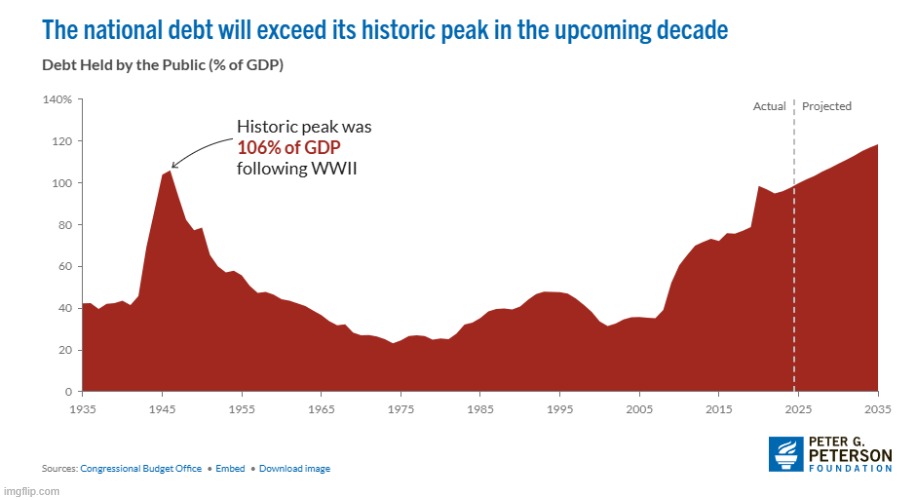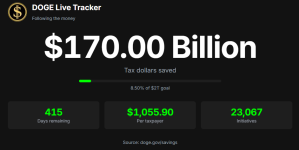If you thought Elon Musk was really trying to cut costs,
you weren’t in on the joke.
...Musk initially promised that he would eliminate $2 trillion of the $7 trillion federal budget, before scaling back his ambitions to $1 trillion, and then $150 billion. Even that revised target is highly improbable....
...Precisely measuring the budgetary effects of the Musk experiment remains difficult, but
we can begin by looking at the claims made by DOGE itself. In late February, its website
claimed to have achieved $55 billion in annual-spending reductions. However, its “wall of receipts” detailed only $16.5 billion of this total. Half of that figure came from a typo claiming $8 billion in savings from terminating an $8 million contract. As
The New York Times has
reported, that was far from the only accounting error. Once such mistakes as false contract cancellations, triple counts of the same reform, and the inclusion of contracts that expired decades ago were fixed, verified budget savings stood at just
$2 billion....
The DOGE website now
claims $165 billion in savings. However,
it still details only a fraction of the supposed cuts, and
earlier accounting errors have given way to new ones. A common sleight of hand is canceling a
“blanket purchase agreement”—in which the recipient had been given the equivalent of a credit limit to incur necessary costs on a project—and then claiming savings of the full credit limit rather than the (in many cases substantially lower) amount that was actually spent. ...
Fortunately, more reliable sources than DOGE’s self-reported figures exist. The best is the Treasury Department’s
monthly accounting of spending by agency and program. Any true DOGE spending reductions should show up in these budget totals, as should the results of other White House initiatives, including cuts to public-health spending and the ongoing efforts to eliminate USAID and the Department of Education.
These spending data
do not flatter the Musk project. Total federal outlays in February and March were $86 billion (or 7 percent) higher than the levels from the same months a year ago, when adjusted for timing shifts. ..





